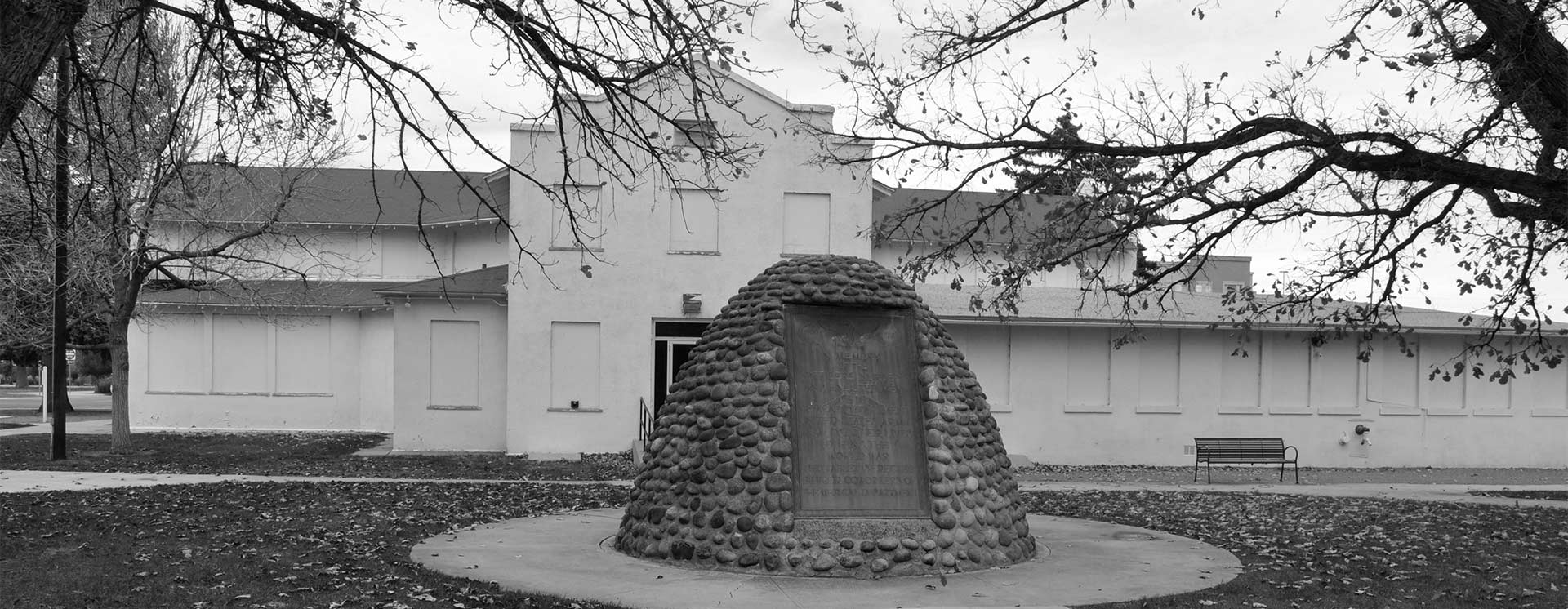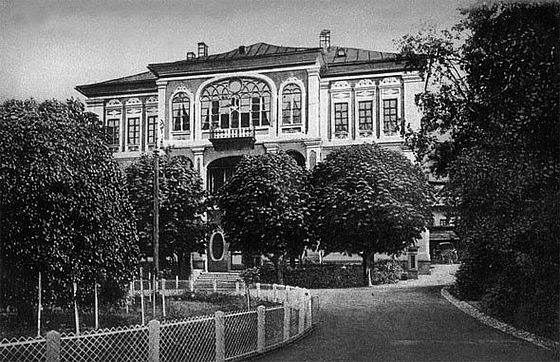
World War One Sites - The NETWORLD Database
"Konak" governoral residence in Sarajevo, Bosnia and Herzegovina
“Konak” was built in 1869 as a residence for Ottoman governor of Bosnian vilayet. In Austro-Hungarian period Konak was also used as a governor’s residence. Immediately after assassination, mortally wounded archduke Franz Ferdinand and countess Sophie Chotek were brought to Konak, but they both deceased along the way. In the next days, their posthumous remains were taken from Konak, and then sent to Austria for burial.
Bosnia and Herzegovina, Sarajevo
Type of WWI-heritage
- Non-Military Site of World War One Relevance
Dimensions
cca. 26,70 x 24,52 m
State of repair/preservation
Well preserved
Historical WWI Context
The residence was built by Topal Šerif Osman paša (1861-1869), and is known amongst the people as "Konak." The building located in the Sarajevo neighborhood of Bistrik was completed in November 1869 and during its time it was one of the most beautiful and tallest objects. It was constructed by Franje Linardov and Franjo Moise from Split. During Austro-Hungarian rule, in 1906, some architectural work was undertaken on the building and a courtyard with two stone lion figures was built in its close proximity. Immediately after the Sarajevo assassination, lieutenant-general Potiorek ordered the driver to drive to his nearby official residence, the Konak. En route it became apparent both Sophie and Franz Ferdinand were hit.” Sophie was dead on arrival at the Konak, and Franz Ferdinand died approximately fifteen minutes later, shortly after 11:00. One room of "Konak" held the posthumous remains of Austro-Hungarian Archduke Franz Ferdinand and his wife Sofia, immediately before their posthumous remains were sent to Austria for burial.
Recent Images
Historical Images
State of legal protection
Declared national monument by Commission for protection of cultural heritage, acknowledged by other heritage agencies.
Kind of cultural use of WWI
Konak is part of the “Sarajevo assassination” guided tour.
Opening
Closed for visitors.
Entrance Fee
No information available
Information regarding cities, villages, other touristic attractions (non-WWI) nearby
City of Sarajevo
Accomodation
Public Transport
Bike, Car, Taxi, Minibus, Bus, Tramway, Trolleybus.
Further information sources
https://en.wikipedia.org/wiki/Assassination_of_Archduke_Franz_Ferdinand_of_Austria
https://bs.wikipedia.org/wiki/Konak_na_Bistriku
https://bs.wikipedia.org/wiki/Zemaljska_vlada
http://h.etf.unsa.ba/vmuzej-atentata/index.html
http://old.kons.gov.ba/main.php?mod=spomenici&extra=Odluke&action=view&lang=1&id=2982
Lyon, James, “The Shots That Started World War One:The Street Corner that Changed the World: A Sunny Sunday In Sarajevo (Part 3)”, https://m.warhistoryonline.com/articles/street-corner.html
Muzej Sarajeva, Muzej “Sarajevo 1878-1918”, http://www.muzejsarajeva.ba/bs/dani-kantona-dan-noc-muzejadepandansi/muzej-sarajevo
BOGIĆEVIĆ, Vojislav, Sarajevski atentat – Stenogram Glavne rasprave protiv Gavrila Principa i drugova, Izdanje Državnog arhiva BiH, Sarajevo, 1954.ž
BOGIČEVIĆ, Vojislav, Mlada Bosna – Pisma i prilozi, Svjetlost, Sarajevo, 1954.
DEDIJER, Vladimir, Sarajevo 1914., Prosveta, Beograd, 1966.
Other heritage sites nearby
- Pašino brdo (Werk IV), Sarajevo, Bosnia and Herzegovina
- Mala kula – Grdonj, Grdonj hill, Sarajevo, Bosnia and Herzegovina
- Assassination memorial plaques in Sarajevo, Bosnia and Herzegovina
- Franz & Sophie Monument in Sarajevo, Bosnia and Herzegovina
- Ground zero - 1914 Assassination location in Sarajevo, Bosnia and Herzegovina
- City Hall (Vijećnica) in Sarajevo, Bosnia and Herzegovina
- Appel quai, archiduke's route to death, a street in Sarajevo, Bosnia and Herzegovina
- Old narrow gauge railway station in Sarajevo, Bosnia and Herzegovina
- Narrow Gauge train station in Ilidža near Sarajevo, Bosnia and Herzegovina
- "Groblje Lav” military cemetery in Sarajevo, Bosnia and Herzegovina
- Hotel "Bosna", part of the Spa complex in Ilidža near Sarajevo, Bosnia and Herzegovina
- Fort Draguljac military fortification in Sarajevo, Bosnia and Herzegovina
- Weissbastion (Bijela tabija) in Sarajevo, Bosnia and Herzegovina
- Fort Vraca in Sarajevo, Bosnia and Herzegovina
- Werk Zlatište military fortification in Sarajevo, Bosnia and Herzegovina
- Prinz Eugen Kaserne (Jajce kasarna), military quarters in Sarajevo, Bosnia and Herzegovina
- "Filipović lager" military barracks in Sarajevo, Bosnia and Herzegovina
- Franz Joseph Kaserne in Sarajevo, Bosnia and Herzegovina
Museums Private Collections
"Konak" governoral residence in Sarajevo, Bosnia and Herzegovina
43.85629971582146 18.430752905098757 fileadmin/res/images/layout/standar-marker.pngLocation


